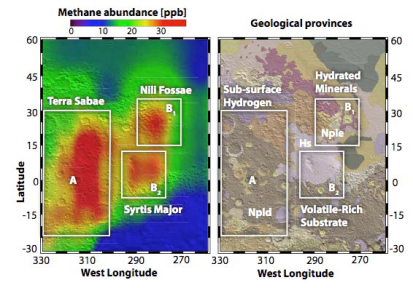Apart from finding mundane facts about Mars, one
of NASA’s Curiosity rover’s tasks is to search for life on the red
planet. But new research suggests that, if there is indeed life on Mars,
our rovers may not be able to see it.

So far, the Curiosity rover has only drilled
about 3 inches (7.6 cm) into Mars’ soil, and found nothing. According
to an analysis of Martian meteorites found on Earth, signs of life on
Mars are more likely to be found deep underground, rather than on or
near the surface.
There have been more than 100 meteorites to land on Earth from Mars that scientists know of.
Meteorites are chunks of rock from Mars that got knocked off of the
surface when an asteroid or comet hit the planet. Sometimes they get
pulled into Earth’s gravity and fall to the ground.
The new research, published in Nature Communications,
crushed meteorites from Mars found on Earth and found out they released
methane, one of the indicators of life. “The availability of methane
and hydrogen is critical to the potential of the Martian crust as a
habitat for microbial life,” according to a research team led by Nigel
Blamey of Brock University. “Any life on Mars is likely to be in the
subsurface.”
More than 90% of the methane produced on Earth comes from organic life—humans,
plants, insects, and animals (especially cows). But non-living sources
of methane have also been known to support bacteria.
Scientists are still divided
about what the presence of methane on Mars means. It could support the
existence of methane-feeding bacteria, or it could suggest the existence
of methane-producing organisms that lived on Mars millions of years
ago, when liquid water may have flowed on on its surface. But the
methane in the meteorites found by Blamey and his team was most likely
formed by chemical reactions between volcanic rocks and the Martian
atmosphere.
“In essence the research confirms that an energy
source for microbial activity exists in the Martian environment but in
the subsurface,” Blamey told Quartz. “We do not have evidence of life,
only that there is an available food source in the subsurface that
potential microbial life could metabolize.”Source
Comment by Oliviero Mannucci: Dear NASA, if you want find life on Mars, you will find it underground, where there is a lot of hot water. Try for believe!
No comments:
Post a Comment
Note: Only a member of this blog may post a comment.